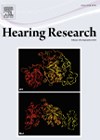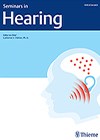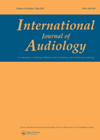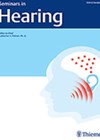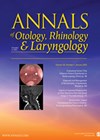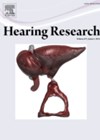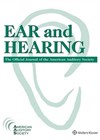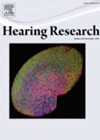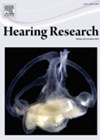
Journal Reviews
What is in the Fountain of Youth?
Does the auditory system have to age? Can we become more like turtles or jellyfish and keep our internals running without degradation? This essay considers the theoretical underpinnings of biological processes in the cochlear, in particular the role of the...
Are we all in the matrix?
In the entirety of training and in further practice, we are instilled with the premise of patient-centred care and individualised management plans based on informed consent. The question in the new age of telehealth/e-health is how to mimic that personalisation...
The ‘My Hearing Explained’ tool: audiologist and client perceptions
The study notes that the pure tone audiogram has been the primary clinical and counselling tool used by clinicians to assess and describe hearing thresholds to individuals and families since 1922. The Ida Institutes, ‘My Hearing Explained’ tool has become...
Hurdle jumping
This article deserves a little attention, rather like settling into conversation. As the writers state, listening is an effort and is a tricky field of study when combining multiple physiological measures. In order to gain an understanding, they suggest: consider...
Sudden sensorineural hearing loss – who will get better?
Idiopathic sudden sensorineural hearing loss (ISSNHL) is a rare but potentially devastating condition. For patients presenting with this condition, prognosis is of paramount importance. Wu et al begin to address this issue by retrospectively studying 17 potential prognostic factors for...
What is trendy?
This edition of Seminars in Hearing focused on the results from the MarkeTrak 2022. Now, the relevance to the UK market might be slight limited with some of the data but there are certainly a few interesting nuggets for our...
An understandable backup
This small study comparing the auditory temporal processing of seven younger adults with that of seven older adults does not show anything breathtakingly new in its conclusions. After the assessment to rule out compounding factors such as middle ear pathology,...
It is all so COSI…
Something which we have realised for a long time in the UK is the importance of the clinician in the assessment and long-term adoption of hearing aids. This common sense article outlines the need for more individualised patient pathways, thinking...
Low-frequency air-bone gaps appear to be a true audiological finding in Ménière’s disease
There is a lack of established objective tests in Ménière’s disease (MD) that can provide information about the disease process. The appearance of low-frequency air-bone gaps (LFABGs) in MD is a recognised but unexplored phenomenon. Two theories have been suggested...
Small but significant
These authors try to circumnavigate the conundrum of what is influenced by what. For something so small, the impact of the Stria Vascularis cannot be understated. The difficulty in reviewing the influence of loop diuretics or aminoglycosides on the Stria...
Is there an association with cognitive impairment and hearing loss in a developing country?
Hearing loss (HL) is the third leading chronic health condition among older adults. Most studies investigating HL and cognition have been performed in high-income countries. Risk factors for dementia (eg. hypertension, midlife hearing loss, obesity and physical inactivity) are more...
A twitch in time with a flicker of knowledge
The middle ear muscles can be seen as one of the ear’s safety mechanisms, and the interplay between eyes and ears has been established; think vestibular ocular reflex (VOR) or semi-circular canal dehiscence (SCCD). But can this protective mechanism be...

